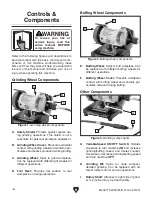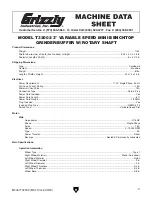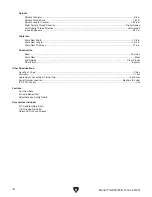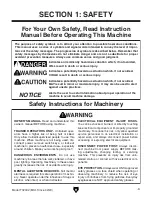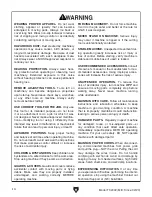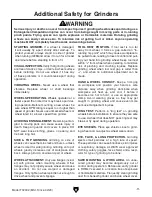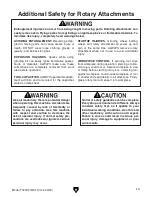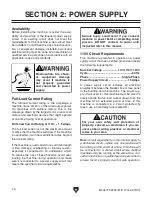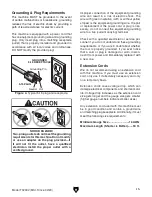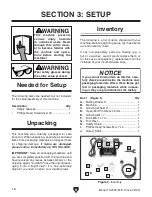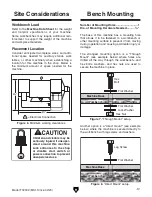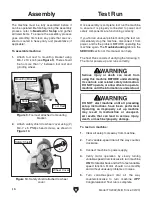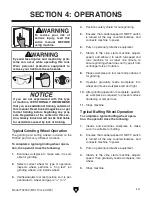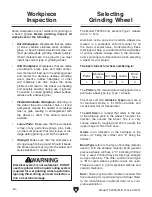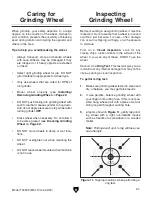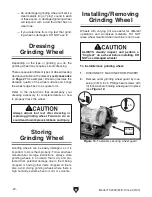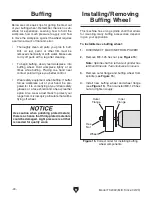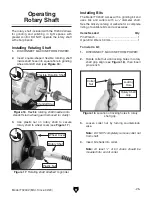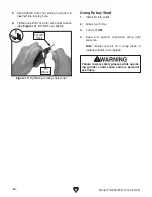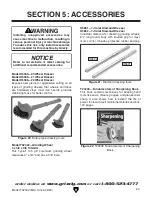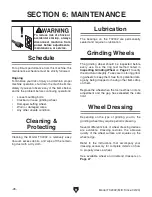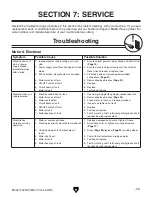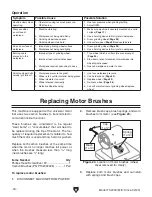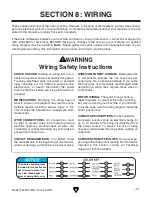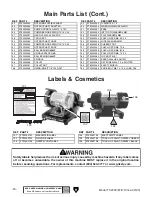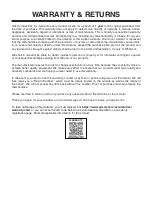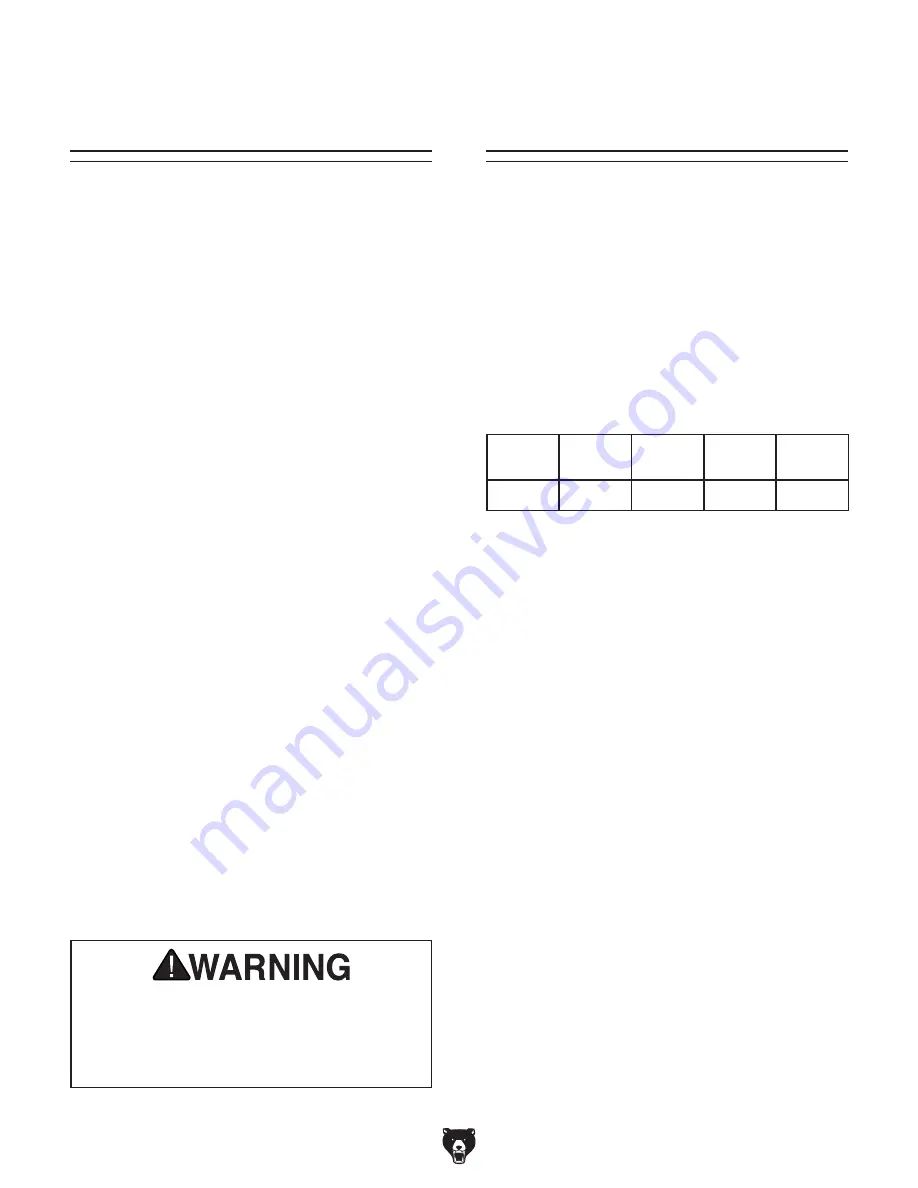
-20-
Model T32002 (Mfd. Since 02/20)
Workpiece
Inspection
Electrical system is not waterproof. DO NOT
use this grinder with a liquid cooling system
required for wet grinding wheel operations.
Ignoring this warning can lead to electrocu-
tion or machine damage.
Some workpieces are not suitable for grinding on
a bench grinder.
Before grinding, inspect all
workpieces for the following:
•
Hard Workpiece: Workpieces that are made
of stone, carbide, stainless steel, ceramics,
glass, or have hardened welds will wear out
most general-grade grinding wheels quickly.
If hard materials are to be ground, you must
install the correct type of grinding wheel.
•
Soft Workpiece: Workpieces that are made
of aluminum, brass, lead, and other nonfer-
rous metals will load up in the grinding wheel
and render the abrasive useless. Grinding
wood, plastics, rubber, fiberglass, or other
soft materials can also cause the same
problem and lead to the wheel overheating
and possibly bursting during use if ignored.
To restore a loaded grinding wheel surface,
redress with a dressing tool.
•
Flexible/Unstable Workpiece: Grinding on
the side or the ends of cable, chain, or round
workpieces creates the hazard of workpiece
twist or grab, leading to entanglement with
the wheel or shaft. This hazard must be
avoided.
•
Loose Parts: Make sure that the workpiece
is free of any parts like springs, pins, balls,
or other components that may loosen or dis-
lodge during grinding, and hit the operator.
•
Strength: Make sure that the workpiece is
strong enough to be ground. Should it break,
the broken piece may dig into the wheel and
cause kickback or severe injury.
Selecting
Grinding Wheel
The Model T32002 only accepts Type 1 wheels
with a
3
⁄
8
" bore.
Aluminum oxide and silicon carbide wheels are
marked in a somewhat uniform manner by all
the major manufacturers. Understanding these
markings will help you understand the capabilities
of various wheels. Always refer to the manufac-
turer’s grinding recommendations when selecting
a wheel for your project.
The basic format for wheel numbering is:
Prefix
Abrasive
Type
Grit Size Grade
Bond
Type
1
A
60
L
V
The
Prefix is the manufacturer’s designation for a
particular wheel type (eg. Type 1 wheels).
The most common
Abrasive Types used are A
for Aluminum Oxide, C for Silicon Carbide, and
occasionally SG for Seeded Gel.
The
Grit Size is a number that refers to the size
of the abrasive grain in the wheel. The lower the
number, the coarser the wheel. Ten is a very
coarse wheel for roughing and 220 is usually the
upper range for fine finish work.
Grade is an indication of the hardness of the
wheel—“A” being the softest and “Z” being the
hardest.
Bond Type refers to the type of bonding material
used to hold the abrasive material. Most general
purpose wheels will have a “V” indicating Vitrified
Clay is used. Vitrified Clay provides high strength
and good porosity. The other common bond type
is “B” for resin where synthetic resins are used.
These are used to grind cemented carbide and
ceramic materials.
Note: There may be other numbers inserted that
have meaning for a particular type of wheel. Refer
to the manufacturer’s technical data for a com-
plete explanation.
Summary of Contents for T32002
Page 36: ......

